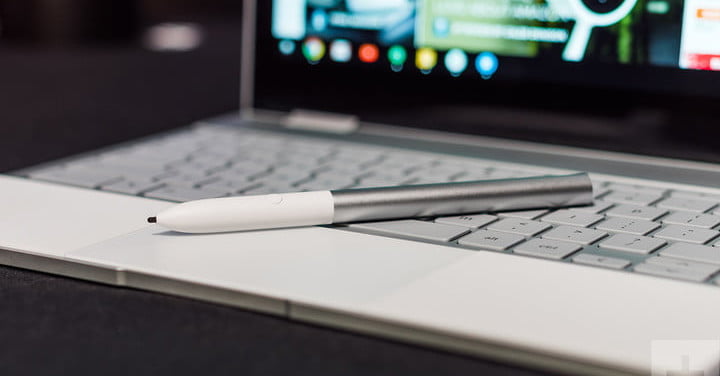Pixelbook 2: Everything You Need to Know

Thanks to its clean design and powerful internals, Google’s Pixelbook remains one of the best Chromebooks on the market today and a capable Windows or Mac replacement. However, it’s been more than a year since the Pixelbook went on sale, and although rumor was rife that Google will announce a Pixelbook successor at its October #madebygoogle event in New York, that didn’t happen. Now, we’re hearing rumors that the Pixelbook 2 could finally be making its debut at CES 2019.
Instead, at Google’s October 2018 hardware event, Google focused on the tablet-enabled features of Chrome OS. In essence, this made the Pixel Slate the star of Google’s hardware and software efforts. Like the original Pixelbook, the 2018 Pixel Slate can convert between tablet and laptop modes, but it accomplishes the transformation by using a detachable keyboard instead of the Pixelbook’s 360-degree hinge. With its convertible form factor, when it debuts, the Pixelbook 2 could also benefit from Google’s recent efforts to make Chrome OS feel more at home on tablets.
Release date and price
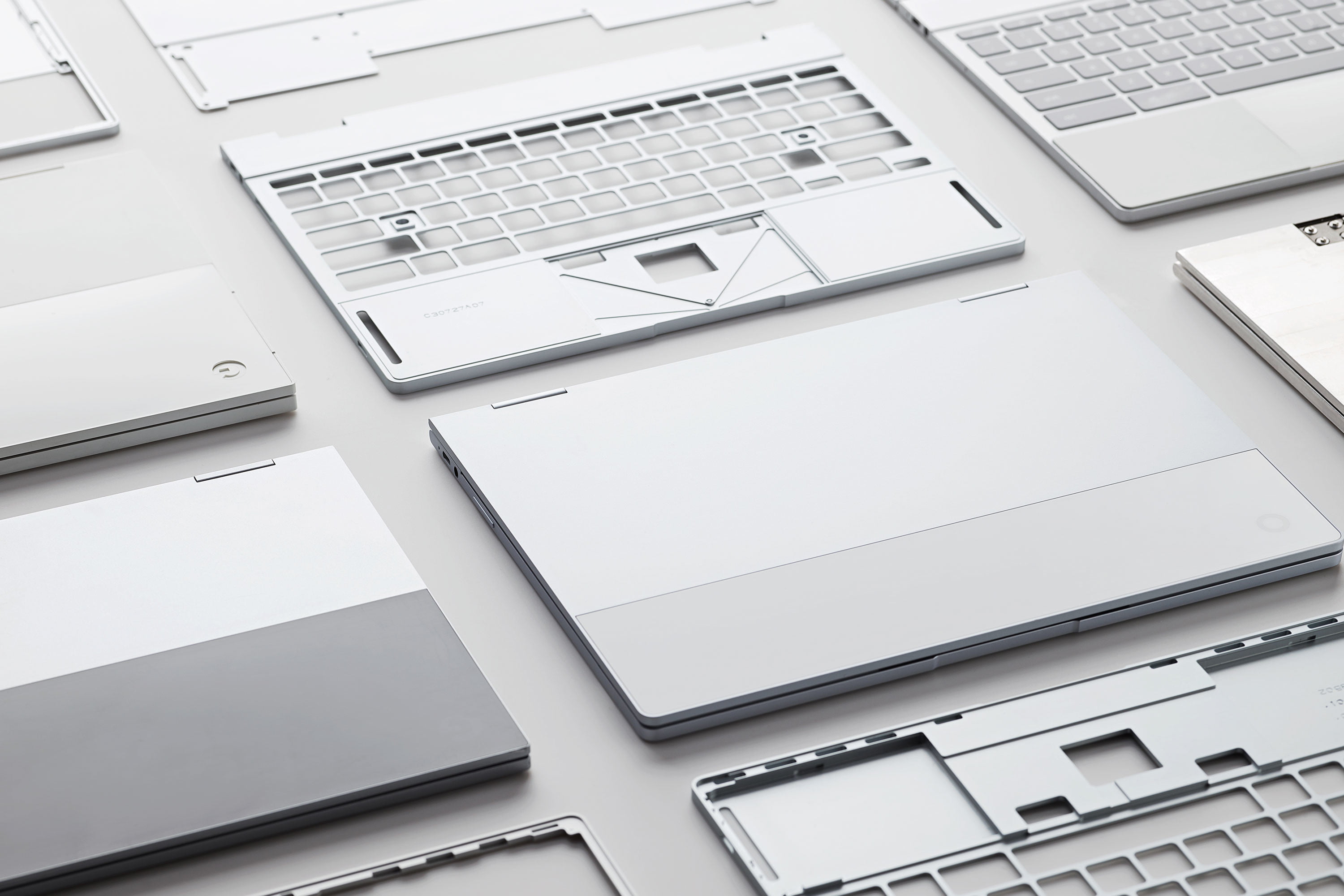
Given that the original Pixelbook was announced at a similar event almost a year prior in October 2017, many had anticipated that the Pixelbook 2 would follow a similar trajectory. Now, it appears that Google is waiting until CES 2019 to announce its Pixelbook refresh, and hints that an incoming Pixelbook 2 have been appearing in the Chromium code repository. If Google follows past history with its huge huge presence at CES 2018, it could similarly dominate the Consumer Electronics Show in 2019, and the venue could be the perfect opportunity for the Chrome OS-maker to show off its new wares.
References to the Pixelbook 2 have been appearing recently in the Chrome OS repository. Google had submitted code commits, highlighting the LED light tweaks and audio tuning for Atlas. These commits generally appear near the final stages of development, and the Atlas references in Chrome OS code may be a positive sign that Google is wrapping up work on the device before the device’s debut.
Atlas is also mentioned by name in Google’s Crostini development, a project designed to allow Linux apps to run on Chrome OS. This code may indicate that early Pixelbook 2 prototypes are being used by developers to test Crostini. With CES scheduled to run from January 8 through January 11, we won’t have too much longer to know if the Pixelbook 2 will finally materialize after being absent at Google’s last hardware event.
For now, if you’re interested in this year’s Chrome OS Pixel hardware, the Pixel Slate starts at $599, though the price quickly increases depending on the configuration selected. The original Pixelbook currently starts at $999, and the highest configuration tops out at $1,649. We expect Google to maintain similar pricing for the Pixelbook 2.
Like Apple and Microsoft, the Pixel Slate’s keyboard and pen accessories are optional extras. The Pixel’s folio keyboard case will cost an extra $199 while the Pixel Pen will add $99 to the purchase price.
A tale of two Pixelbooks
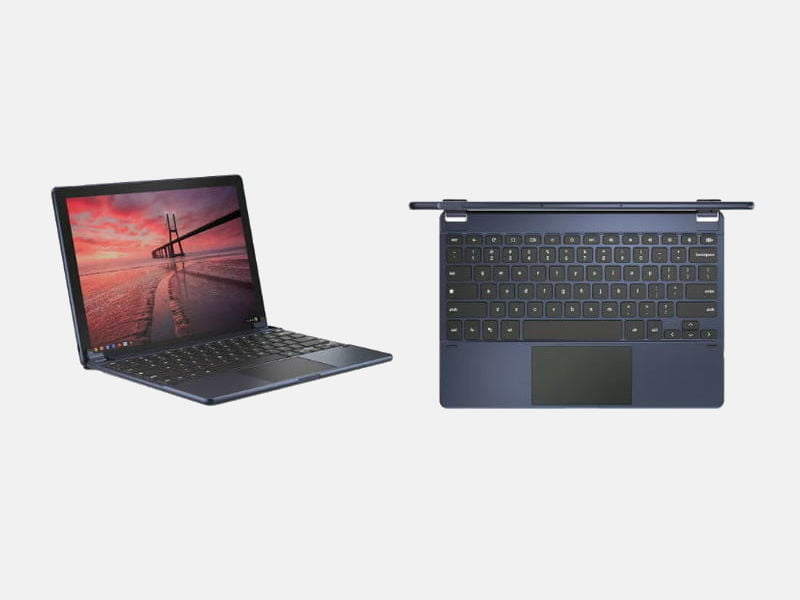
Early leaks suggested that Google was developing two devices internally called Nocturne and Atlas. Both devices made appearances in the Chromium repository and seem quite likely to be two different renditions of a second-generation Pixelbook. When Atlas first showed up in the repository, it was said to be “closely related to eve,” with Eve being the codename of the original Pixelbook. Atlas also has the same number of ports as the original Pixelbook.
Nocturne, as we now know from Google’s event, launched as the Pixel Slate. At the event, Google executives claimed that the Slate represents the company’s new vision for Chrome OS to deliver productivity and entertainment on the go. The Slate is Google’s first Chrome OS tablet, but also one that can convert into a laptop thanks to an optional $199 keyboard folio accessory. This makes the Pixel Slate more competitive against other devices with similar form factors like the iPad Pro and Microsoft’s Surface Pro.
Atlas was then believed to be the codename for the Pixelbook 2, a Chrome OS convertible laptop that would share a similar form factor to the original Pixelbook.
Thinner bezels and a higher resolution display
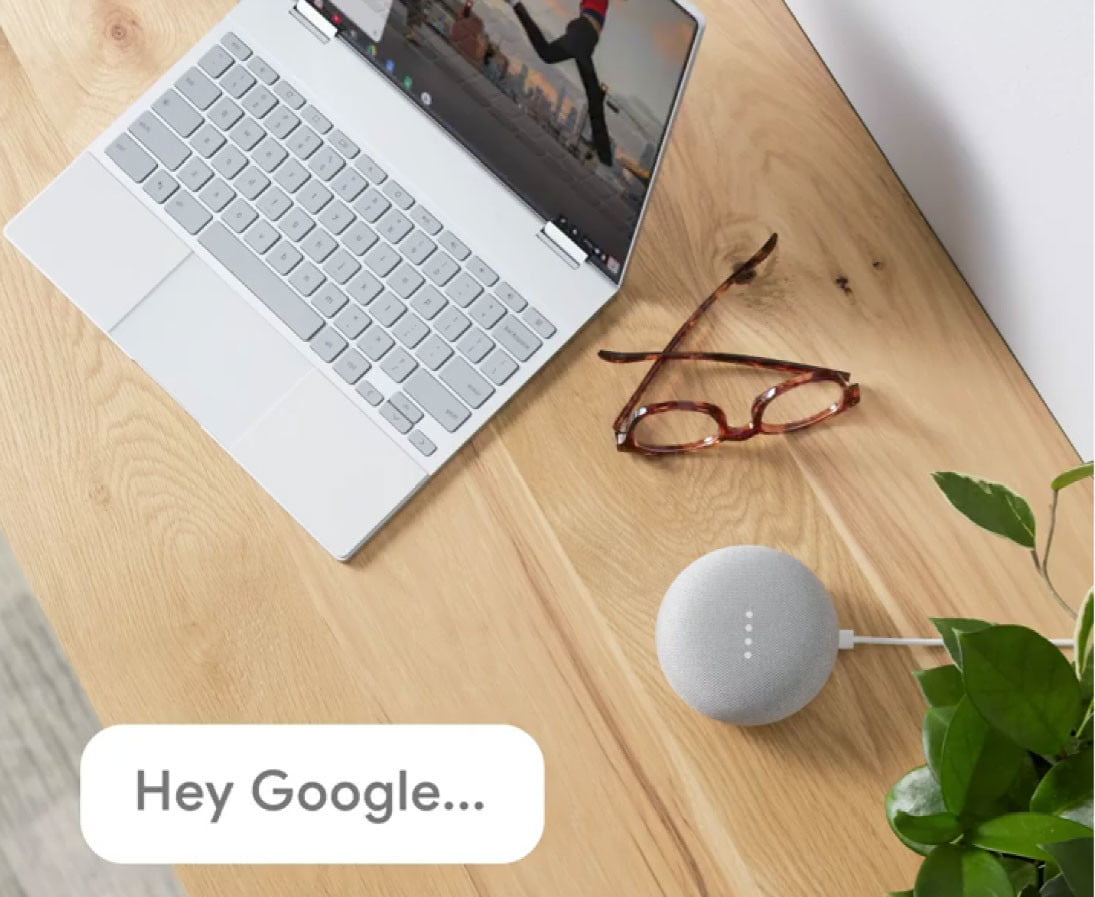
Dell was one of the first PC companies to experiment with barely-there bezels on its XPS laptop, and the feature has proven to be so popular that other notebook manufacturers followed suit. Even if Google recycled the current aluminum-clad design with glass accent on the current Pixelbook for its second-generation laptop, thinner bezels would not only help the laptop appear more modern against competitors, but it’s a feature that also brings business appeal. A design with slimmer bezels would help the Pixelbook 2 occupy a smaller footprint on a desk or a laptop bag.
A leaked Google advert appeared to show a near-bezel-free Pixelbook-like device, potentially giving us our first look at what the next-generation Pixelbook looks like. This would confirm rumors reported by VentureBeat’s Evan Blass, who recently tweeted that smaller bezels are part of this year’s upgrade. Another key display feature that was rumored was 4K resolution.
It’s unclear if the popular trend towards slimmer bezels will pan out on the Pixelbook 2, given the fact that even the Pixel Slate’s bezels didn’t appear to be cut down from the original Pixelbook.
Updated processors
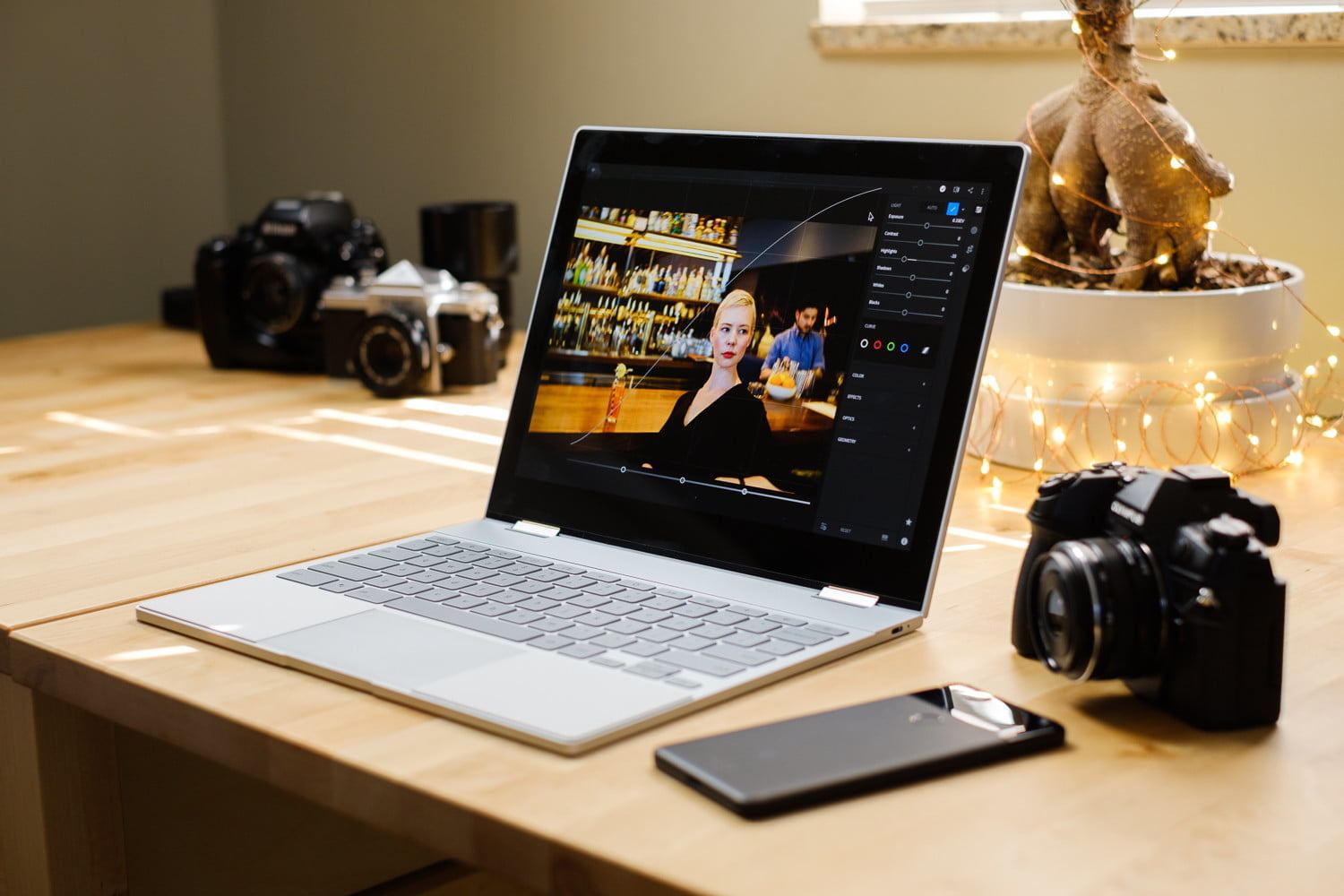
When it launched in late-2017, the original Pixelbook shared the same 7th-generation Intel mobile processors as Apple’s 12-inch MacBook, making it a capable machine, especially for a Chromebook. However, with most laptop manufacturers (including Apple) recently making the switch to newer 8th-generation processors, many in the tech community expected Google to make similar upgrades when it refreshes the premium Pixelbook.
Google eventually did make the switch to Intel’s 8th-generation processors in October when it announced the Pixel Slate. That device debuted with Intel’s Amber Lake Y-Series processor, coming in a dual-core, four-thread architecture that’s designed for thin and light devices. The Pixel Slate also integrated Intel’s UHD 615 graphics.
Earlier rumors suggested that the Pixel Slate 2 could utilize either Intel’s U-Series Whiskey Lake processors or the new Amber Lake Y-Series. However, given that the Amber Lake chipset was used on the Pixel Slate, Google could debut down and standardize on Intel’s 8th-Generation mobile processor on the Pixelbook 2.
If Google stays aligned with the original Pixelbook, we’d expect its sequel to come with an option for Whiskey Lake 8th-gen Core i5 and Core i7, as well as the Amber Lake Y-Series in more affordable models. The supply issues with Intel’s recent release of chips, however, could be a reason why the Pixelbook 2 didn’t debut in October 2018, but it appears that Intel is sorting through its production issues and we’re hearing that Whiskey Lake chips will be headed for Chromebooks in 2019, which would align with recent reports that the Pixelbook 2 could debut at CES. Using Whiskey Lake chipsets could allow Google to add a built-in 4G LTE cellular data modem on the Pixelbook 2, a feature that was noticeably absent on the Amber Lake-powered Pixel Slate.
Sticking with Intel chips this year would have helped the Pixelbook 2 improve on the performance of the original, but it could also help Google bring dual-boot support to Chrome OS. The feature could have allowed Chrome OS hardware to also boot into Microsoft’s Windows 10 operating system, making the Pixelbook 2 a more competitive device for business users. Unfortunately, Google did not debut the dual-booting feature when it unveiled the Pixel Slate earlier this month, and it’s unclear if dual-boot support could be ready in January.
Improved tablet support

Chromebook partners have already begun experimenting with new form factors for Chrome OS. Though the Pixelbook brought the convertible form factor to the premium segment for Chrome OS, Acer has since debuted a Chromebook Tab 10 tablet and HP launched its Chromebook x2 with a detachable form factor, similar to Microsoft’s Surface Go.
When Google announced the Pixel Slate, it also announced a new tablet-optimized UI. True to prior speculations, the new UI allows Chrome OS to switch to a touch-friendly mode with larger icons when used as a tablet. When a keyboard is attached, the Pixel Slate switches back to a more productive desktop view. If the Pixelbook 2 gets announced in January at CES, it will likely also benefit from the new UI when it converts into tablet mode.
Google also offered a color upgrade to the Pixel Pen. The pen doesn’t add any new buttons or features to the original Pixel Pen that launched with last year’s Pixelbook. However, rather than a silver option, Google is making a color-matched version of the pen to coordinate with the new Pixel Slate. Original Pixelbook owners looking to add some color to their minimalist Chrome OS notebook can also pick up the midnight blue pen as well.
Fingerprint and facial recognition security
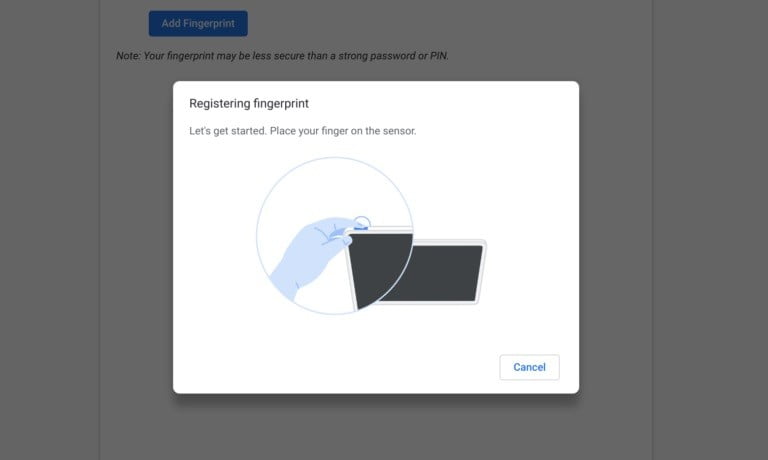
Leaked code found on the Chrome developer channel suggested that fingerprint scanning and facial recognition and will be available on Nocturne, giving users the ability to login to their device without the need for a password. That would be useful for tablet logins where onscreen keyboard typing is far from ideal, and fortunately the feature did materialize on the Pixel Slate when Google announced that tablet.
Google debuted its Pixel Imprint fingerprint scanner on the Pixel Slate, to allow users to log into their Chrome OS devices without needing to type in a password. The feature will likely also make its way to the Pixelbook 2 in January, if Google announces the device at CES. When it debuted earlier this year, Pixel Imprint isn’t perfect. If you share your Pixel Slate between multiple users, you can’t use different fingerprints to switch between profiles. Only the first user is able to use their fingerprint to unlock the Pixel Slate, Google claimed. Hopefully, Google will make profile switching easier if the Pixelbook 2 debuts with this technology.
Integrated LTE

Having a built-in LTE modem on the Pixelbook 2 would be more than just added convenience. With better Android support on Chrome OS devices, and the operating system’s potential to supplant and replace Android tablets, having always-on connectivity would be a huge advantage. This is the same vision that rival Microsoft has for its Always Connected PC platform.
The feature wouldn’t be too hard for Google to accomplish, given that it already operates its own virtual mobile network through Project Fi, which relies on T-Mobile’s and Sprint’s network infrastructure for the backbone. Google’s experiment to deliver voice and mobile data service on its Android smartphone hardware has been met with positive reviews. Google could potentially apply a similar business model to take on data-only devices, like Chromebooks.
Cellular data connections also offer better security, especially when compared to an untrusted public Wi-Fi network, and the feature could allow the Pixelbook 2 to be more appealing to enterprise customers. Google could easily add cellular support to the Pixelbook 2 by adopting Intel’s Y-series platform come January. For now, Chrome OS users requiring LTE support can find the feature on Samsung’s updated Chromebook Plus V2 model.
